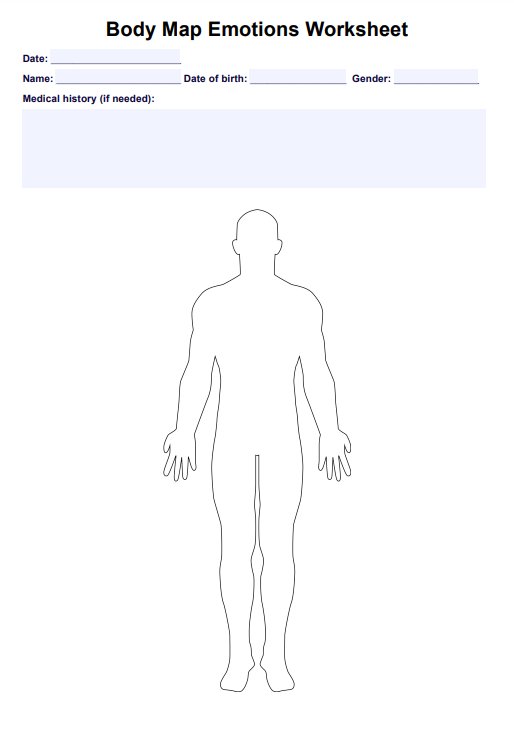Body mapping emotions is identifying and visualizing where different emotions are experienced or stored within the physical body. It involves creating a "map" that associates specific emotions with particular areas or sensations in the body.

Body Map Emotions Worksheet
Help your patient identify their emotions and how each one physically manifests on their body with the help of a body map emotion worksheet template.
Body Map Emotions Worksheet Template
Commonly asked questions
According to research on body mapping, certain emotions tend to be associated with specific body regions. For example, feelings of joy and happiness are often linked to the chest and upper body, while anxiety and fear are commonly felt in the stomach and lower abdomen. Sadness is frequently experienced in the chest and shoulders, and anger is associated with the arms and fists.
The connection between emotions and the body is complex, but some general patterns have been observed. Positive emotions like love and contentment tend to manifest in the upper body, while negative emotions like disgust and shame are more often felt in the mid and lower body. Stress and anxiety can cause physical tension in the neck, shoulders, and back. Emotional pain may be experienced as a "heavy heart" or a "pit in the stomach."
EHR and practice management software
Get started for free
*No credit card required
Free
$0/usd
Unlimited clients
Telehealth
1GB of storage
Client portal text
Automated billing and online payments











